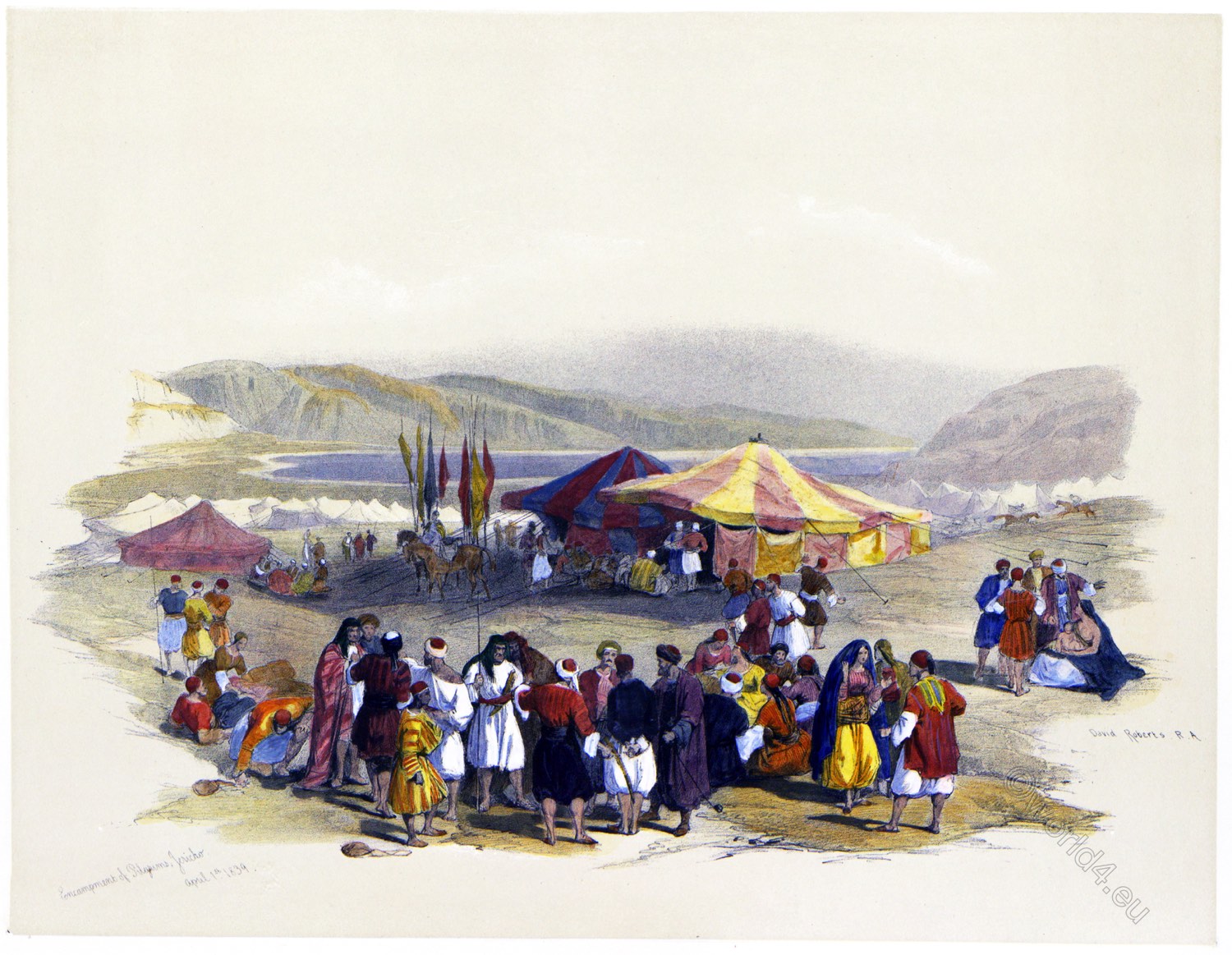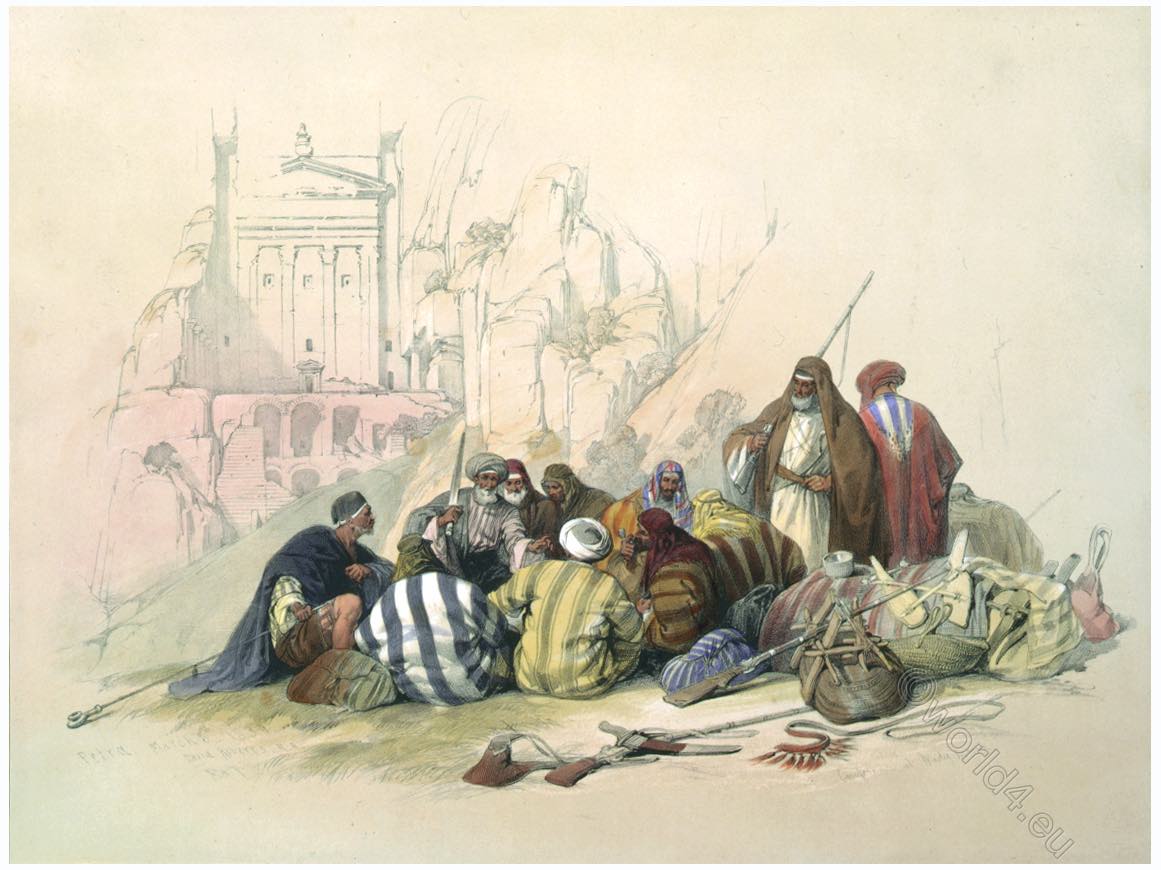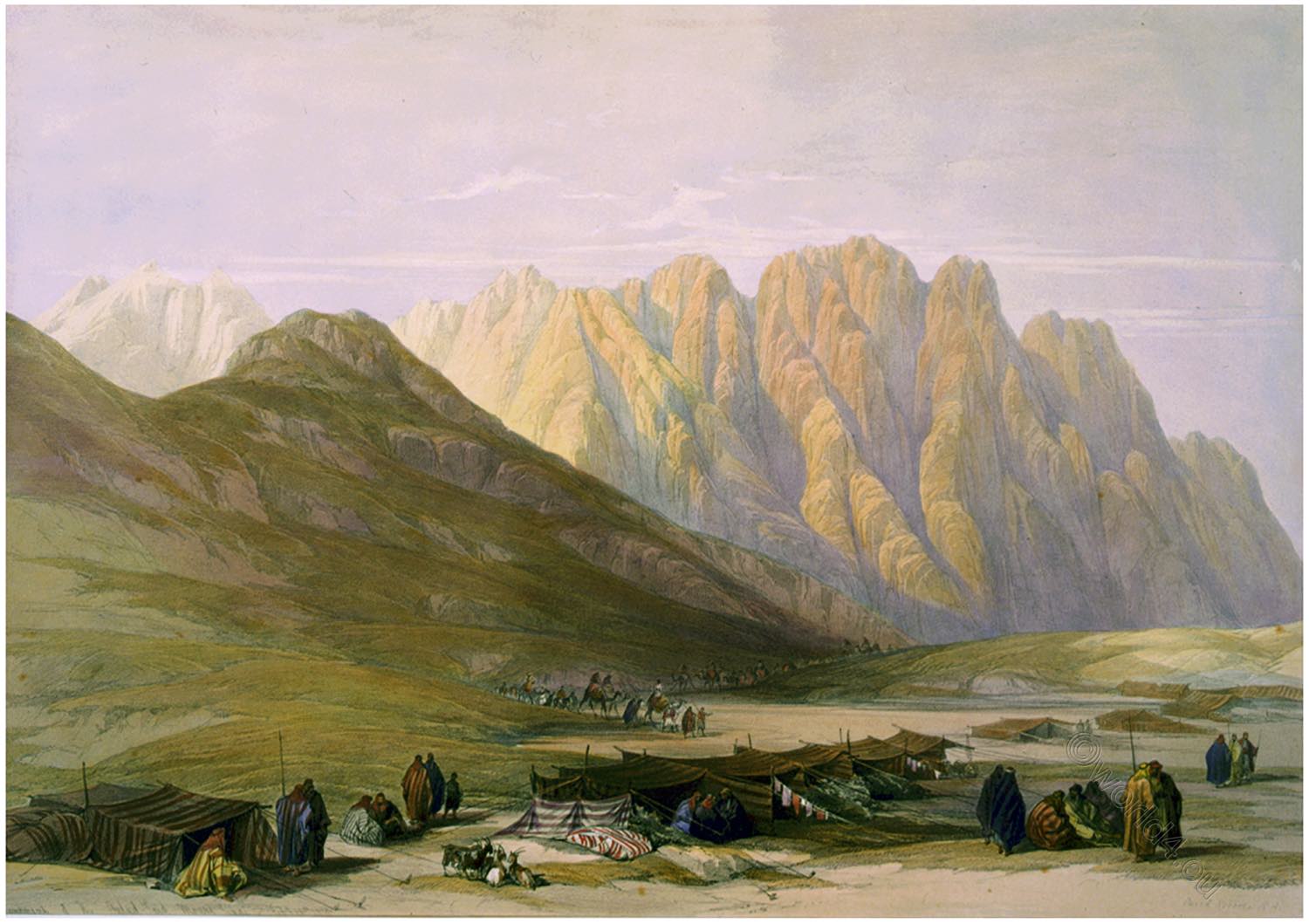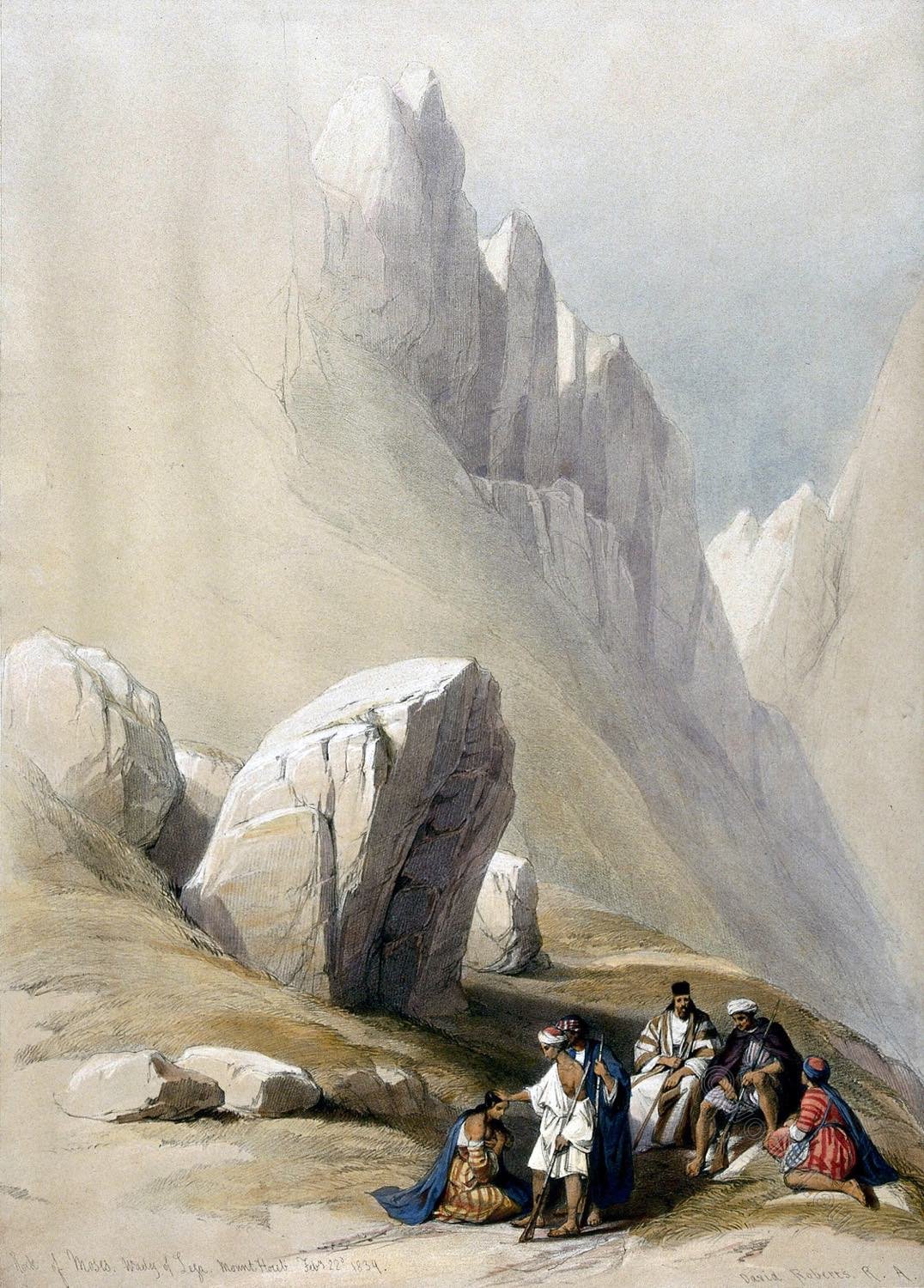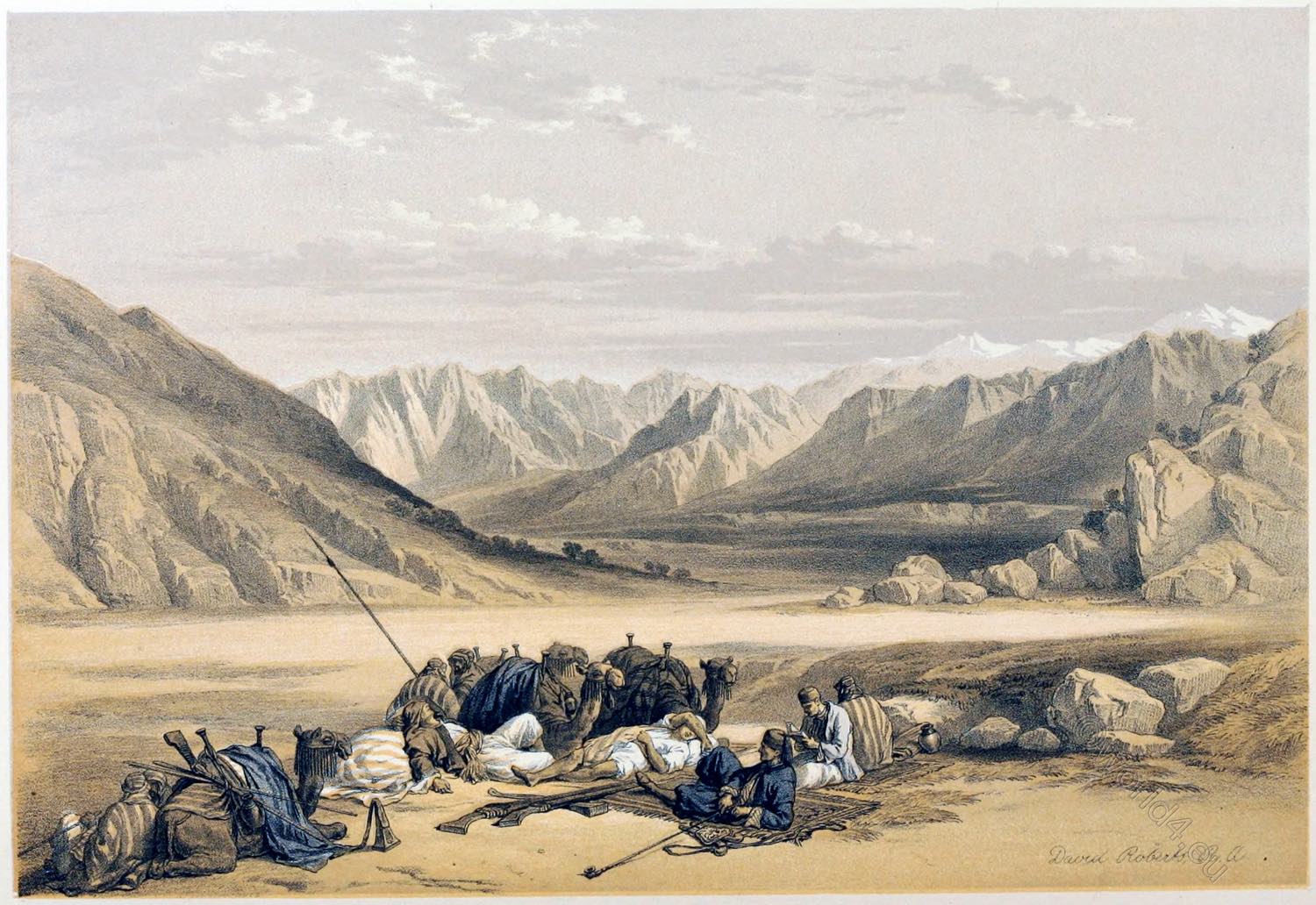
ENCAMPMENT OF THE ALLOEEN IN WADY ARABA.
The northern part of this Wady is supposed to be the Valley of Zin. The road traverses narrow sandy ravines, bounded by vast crags of calcareous rock. Solitude is sometimes grand and awful; but here it is alternately melancholy and startling.
The walls of rock rise like the walls of some vast place of incarceration, but frequently torn and split into the most rugged forms by earthquakes or the elements. It is the “frowning wilderness.” But this gradually improves, and the wild goat and partridge are sometimes to be seen: still the blaze of the sun is fiery; the light reflected from the rocks is blinding; breathing is painful, and thirst rapidly becomes feverish and intolerable.
A late intelligent traveller *) has remarked, “that it is impossible to look around on the ghastly and almost unearthly desolation of this scene, without feeling that the trials of the Israelites were far greater than we had ever before imagined.” But admitting this, it gives only an additional proof of the fitness of the Desert for the discipline; while, by the Divine supply of food and water, the chief perils of the Desert were obviated.
The purpose was to make a new people; and where could this purpose be more directly accomplished than in a vast and solitary region, into which civilised life could not enter, and where all the old habits of the people necessarily died away?
*) Kinnear, Cairo, Petra, &c. 67.
Croly, George (1780-1860), Author
Brockedon, William (1787-1854), Author
Haghe, Louis (1806-1885 ), Lithographer
Roberts, David (1796-1864), Artist
Source: The Holy Land, Syria, Idumea, Arabia, Egypt, & Nubia, by David Roberts, George Croly, William Brockedon. London: Lithographed, printed and published by Day & Son, lithographers to the Queen. Cate Street, Lincoln’s Inn Fields, 1855.
Discover more from World4 Costume Culture History
Subscribe to get the latest posts sent to your email.

